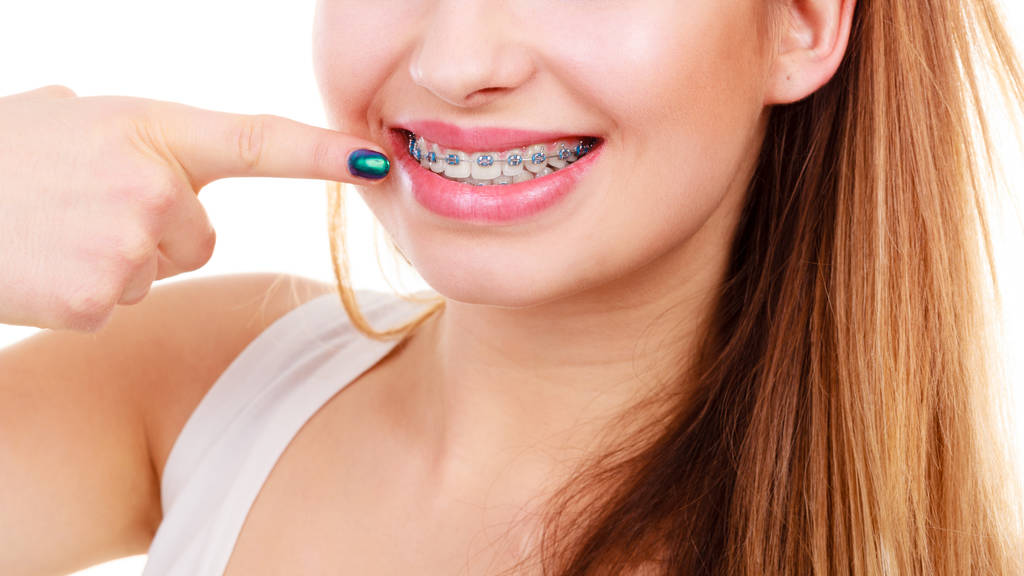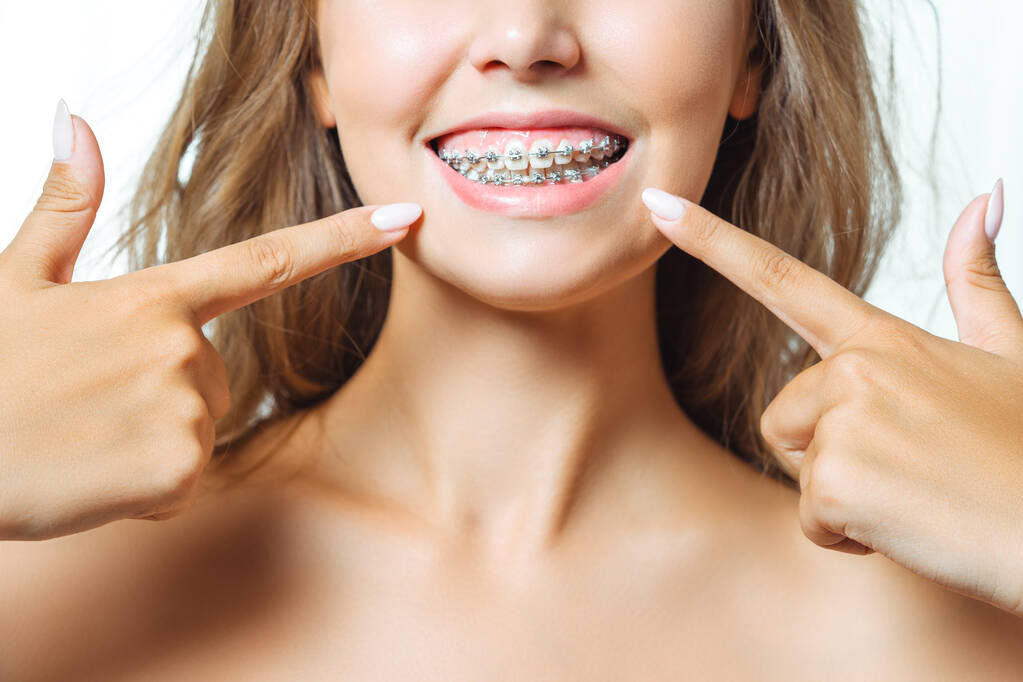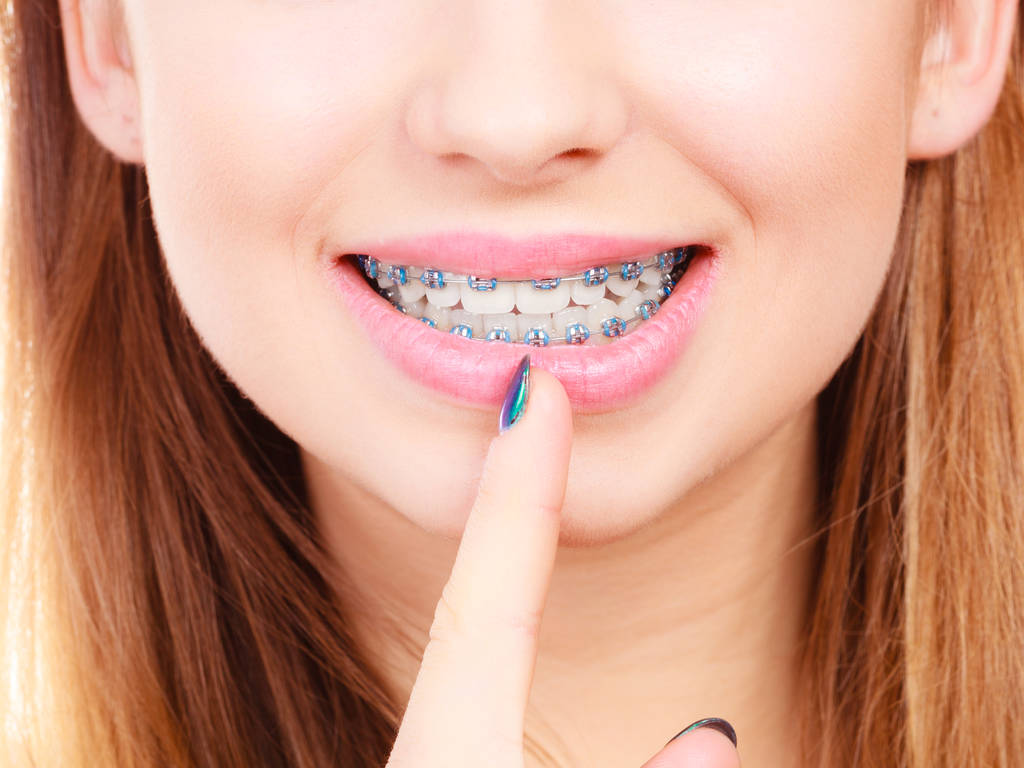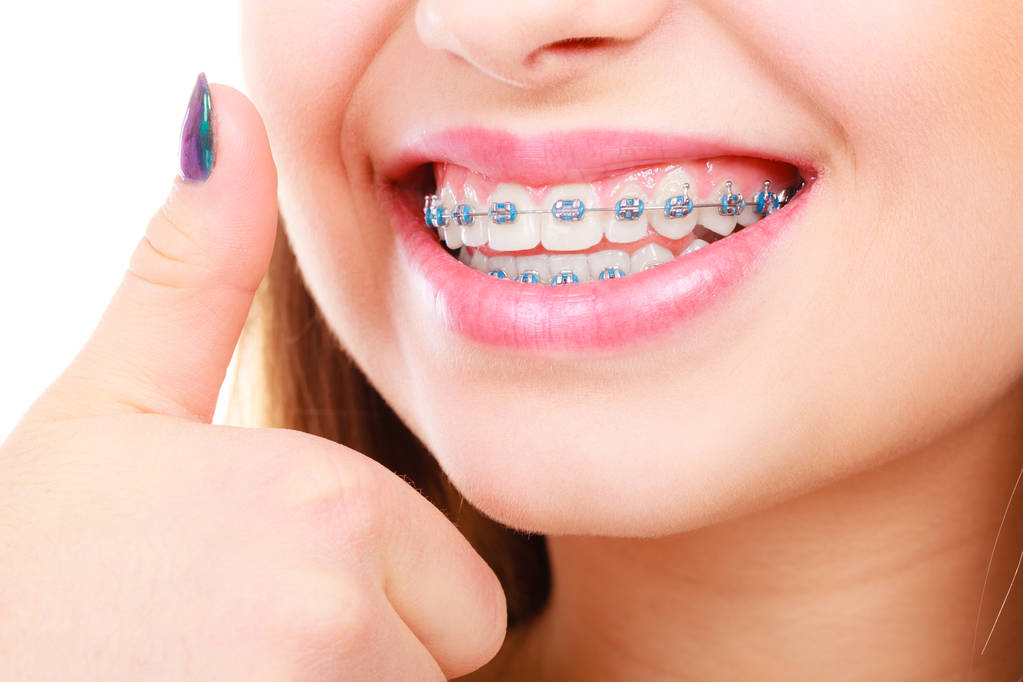Ceramic Braces: A Modern Solution For A Confident Smile

A smile is often the first thing people notice it reflects warmth confidence and how you feel about yourself. But not everyone is comfortable with the idea of wearing traditional metal braces to achieve that perfect smile. Ceramic braces offer a modern solution combining effectiveness with a subtle polish look. They straighten your teeth while blending in naturally so you can focus on your transformation without feeling self conscious.
We’ll break down everything you need to know from how they work and what they’re made of to their pros, cons, cost, maintenance tips and more. If you’re aiming for a straighter smile without drawing too much attention to your braces, ceramic braces could be the perfect fit for your lifestyle.
What are ceramic braces?
Ceramic braces are fix orthodontic devices consisting of transparent or tooth color materials as oppose to bright metal. Brackets are typically compose of a strong ceramic composite that mixes in with your finish. Some ceramic braces also feature white or cover wires and clear rubber bands to complete the “invisible” look.
Ceramic braces function in the same way as metal braces; however, they look better. They offer constant, mild pressure to your teeth, gradually moving them into normal alignment over time. Ceramic braces can treat a variety of dental problems, including.
Crook teeth.
Overbite
Underbite teeth crowding
Gaps between teeth
They are attach to the front of your teeth in the same way that metal braces are and an orthodontist adjusts them regularly to guide your teeth into the proper positions.
How do ceramic braces work?

Ceramic braces use the exact mechanism as regular braces. Here’s how they work
Initial Consultation
Your orthodontist analyzes your teeth, obtains X-rays or 3D scans, and looks at whether ceramic braces would be suitable for your situation.
Location of Brackets
Small ceramic brackets are apply to the surface of each tooth with dental glue. An arch wire then joins these brackets.
Wire Adjustment
Your orthodontist will regularly tighten or adjust the arch wire (typically every 4-6 weeks) to maintain the correct amount of pressure require to shift the teeth.
Tooth Movement
Over time the pressure causes the teeth to shift into position.
Retention Phase
After treatment is complete and the braces are remove you will wear a retainer to keep your teeth in their new correct positions.
Treatment usually lasts 18 months to three years depending on the complexity of your condition.
Advantages of Ceramic Braces
Ceramic braces are gaining popularity not only because of their appearance but also due to their effectiveness.
aesthetically pleasing
The most significant advantage of ceramic braces is their invisibility. Because they are tooth color or clear they blend in with your teeth and are much less visible than traditional metal braces. This makes them a popular choice among students, adults and professionals looking to avoid the “metal-mouth” look.
Effective results
Ceramic braces employ the same tooth movement technique as metal braces and are equally effective in treating bite difficulties alignment problems and reducing gaps. You do not have to sacrifice results for appearance.
Easy to Wear
Many patients choose ceramic braces over metal ones. Ceramic brackets are smoother and less likely to irritate your cheeks and gums.
Enhances confidence
Ceramic braces because of their discreet appearance help patients feel more confident during their treatment. You can easily smile in photographs at work and in social situations without attracting unwant attention.
Disadvantages of ceramic braces
While ceramic braces are a terrific option for many people they have some limits. Understanding these disadvantages can help you decide if they are suitable for you.
Increase fragility
Ceramic brackets are less robust than metal brackets and are more likely to shatter if you bite down on something hard or have mouth trauma. They necessitate special caution and kindness.
Stain-prone
Although the ceramic brackets are stain resistant the elastic ties that hold the wire in place are quickly stain by color meals and liquids such as coffee, tea or curry. This may impair the clear aesthetic with time unless the elastics are change frequently.
A little more expensive
Ceramic braces are typically more expensive than metal braces due to the materials utilize and the cosmetic advantage. This can be a concern for patients on a tight budget.
Treatment may slow down.
In some circumstances ceramic braces therapy may take longer than metal braces. Orthodontists may use less force to prevent harming the more fragile ceramic braces.
Ceramic vs. Metal Braces: A Quick Comparison Feature
Ceramic Braces. Metal Braces
Visibility Low (tooth color/clear).
High (shiny metal). Material: Ceramic composite Stainless steel is more fragile. Comfort is extreme.
Smoother on the cheeks may irritate. Stain Resistance Ties stain easily.
Advantages
Less staining
Higher cost
More affordable
Potentially slower treatment speed
Typically faster
Ceramic Brace Costs

The expense of braces is one of the most common problems for anyone considering getting them. Ceramic braces are often more expensive than metal braces due to the materials use and the additional effort require for their installation and maintenance.
The average price range
U.S.: $4,000 to $8,000
United Kingdom: £3,000 to £6,000
India and Pakistan: ₹60,000 to ₹120,000
PKR 150,000 to 300,000
Other regions: Prices may differ depending on the clinic and treatment length.
Factors influencing costs
Seriousness of misalignment or bite difficulties
Treatment duration
The orthodontist’s expertise and clinic location.
Diagnostic testing (e.g., X-rays, 3D scans). Retainers following treatment
Although the cost may seem high many orthodontic clinics offer monthly payment plans zero interest financing or upfront payment discounts to help make treatment more affordable.
Is insurance coverage available for ceramic braces?
This varies by country and insurance provider. Ceramic braces may be cover in some situations by dental insurance policies they are frequently classify as a cosmetic enhancement rather than a medical necessity.
Tips for Insurance & Payment
Before starting treatment please get in touch with your insurance provider. Inquire if ceramic braces are cover or if they will only cover the exact cost as metal braces.
Determine whether pre approval is require for orthodontic work.
Look into flexible savings accounts (FSAs) or health savings accounts (HSAs) which if available in your area can assist in lowering out of pocket payments.
If insurance is not an option ask your orthodontist about in house financing or third party lenders who specialize in medical procedures.
Maintenance & Care Advice for Ceramic Braces
Proper care is essential to maintain the appearance and function of ceramic braces throughout your treatment.
Here are some easy suggestions to follow
Brush after every meal.
Food can get store in the brackets so wash your teeth after every meal. Use a soft bristle brush or an electric toothbrush equip with an orthodontic head.
Floss Daily
Flossing with braces can be difficult but it is vital. Cleaning around the brackets and under the arch wire can be done with floss threaders interdental brushes or a water flosser.
Ceramic brackets do not discolor but the elastic bands that wrap around them do.
Avoid or limit
Coffee, tea, red wine
Curry, tomato based sauces.
Dark berries and colorful soft beverages.
If you do consume them, rinse your mouth with water or brush your teeth afterwards.
Don’t smoke.
Tobacco can discolor your teeth and elastic bands, reducing the aesthetic value of ceramic braces.
Avoid foods that are hard and sticky.
Hard foods (such as nuts, popcorn, and ice) can crack the ceramic brackets, whereas sticky substances (such as caramel or chewing gum) can dislodge them or damage the wires.
- Maintain regular orthodontic appointments.
- During routine checkups (typically every 4-6 weeks), your orthodontist can replace stained elastic ties to track tooth movement. Make necessary modifications.
Consistent checkups help keep your treatment on track and prevent delays.
Who Should Get Ceramic Braces?

Ceramic braces are an excellent choice for many individuals, particularly those seeking straighter teeth without the visible appearance of metal wires and brackets. However, they may not be appropriate for everyone.
Ideal Candidates
Teens and adults who are aware of their appearance
Working professionals attending meetings, events or public speaking engagements
People with minor to moderate alignment difficulties.
Those who want to take good care of their braces Patients with metal allergies and sensitivities
Not ideal for
Young children who may not adhere to strict care routines
Athletes playing high contact sports
Individuals with severe bite difficulties requiring tremendous forces and People who frequently drink staining beverages such as tea or coffee.
Those seeking the most cost effective option
Consulting with an experience orthodontist is the best way to determine whether ceramic braces are the best option for your smile goals.
(FAQs)
- Do ceramic braces hurt?
Ceramic braces like any other braces may cause discomfort or tightness following adjustments although they are no more uncomfortable than metal ones. Many patients find them more comfortable.
- Will ceramic braces stain permanently?
The brackets are stain resistant, the elastic ties may discolor over time. Regular cleaning and elastic replacement at each appointment keep your braces looking good.
- How long does it take to complete treatment with ceramic braces?
Treatment often lasts 18 months to three years, depending on the complexity of your condition. It may take significantly longer than metal braces in specific scenarios.
- Can I switch from metal to ceramic braces?
Yes, in many circumstances, brackets can be switch throughout treatment. it may incur additional costs and changes. Talk about it with your orthodontist.
- Will people notice that I’m wearing braces?
Ceramic braces are far less apparent than metal braces. Most people won’t notice them unless they look very closely.
Finally, are ceramic braces worth it?
If you want to straighten your teeth without sacrificing your looks ceramic braces are an excellent choice. They combine the benefits of classic braces with a much cleaner more modern appearance.
Reasons to choose ceramic braces
They are discrete and tooth color.
They provide excellent results.
They enhance confidence during the process.
They’re more comfortable and easier on the mouth.
keep the following in mind
They need extra care.
They can quickly stain if not appropriately kept.
They are a bit more pricey.
They’re more delicate than metal braces.
Ceramic braces are an excellent choice for people who value both function and aesthetics. With careful maintenance and regular checks you can experience a stunning makeover while remaining confident throughout the process.
Unique feature
Ceramic braces are thermally comfortable. Ceramic braces do not conduct heat or cold like metal braces thus eating hot (like tea or soup) or cold (like ice cream) does not cause sharp sensitivity or discomfort.
Metal braces are quick to absorb heat or cold temperatures which can cause tooth pain or discomfort.
Ceramic braces on the other hand, remain temperature neutral making them far more comfortable particularly for persons who already have sensitive teeth.
This feature is especially valuable for individuals living in cold climates, where temperature sensitivity can be a daily concern.
Hidden Benefits
Some people have minor allergies or sensitivities to metal, particularly nickel, which is typically use in traditional metal braces. This may result in gum inflammation swelling, and mouth rashes.
Ceramic braces are made of non metallic biocompatible materials making them much safer for people with metal sensitivities or allergies.
This makes ceramic braces a healthier option particularly for individuals with sensitive skin or allergies. Choosing ceramic braces helps you avoid unnecessary discomfort and provides a safer more comfortable orthodontic treatment.
Conclusion
Ceramic braces are more than simply a cosmetic update they are a functional modern orthodontic alternative that fits into today’s lifestyle. Whether you’re preparing for a profession, school or want to feel more confident in your smile ceramic braces are a practical and visually appealing option. If you’re considering orthodontic treatment but are concern about the appearance of metal braces ask your orthodontist about ceramic alternatives. The appropriate treatment has the potential to improve not only your teeth but also your overall quality of life.
